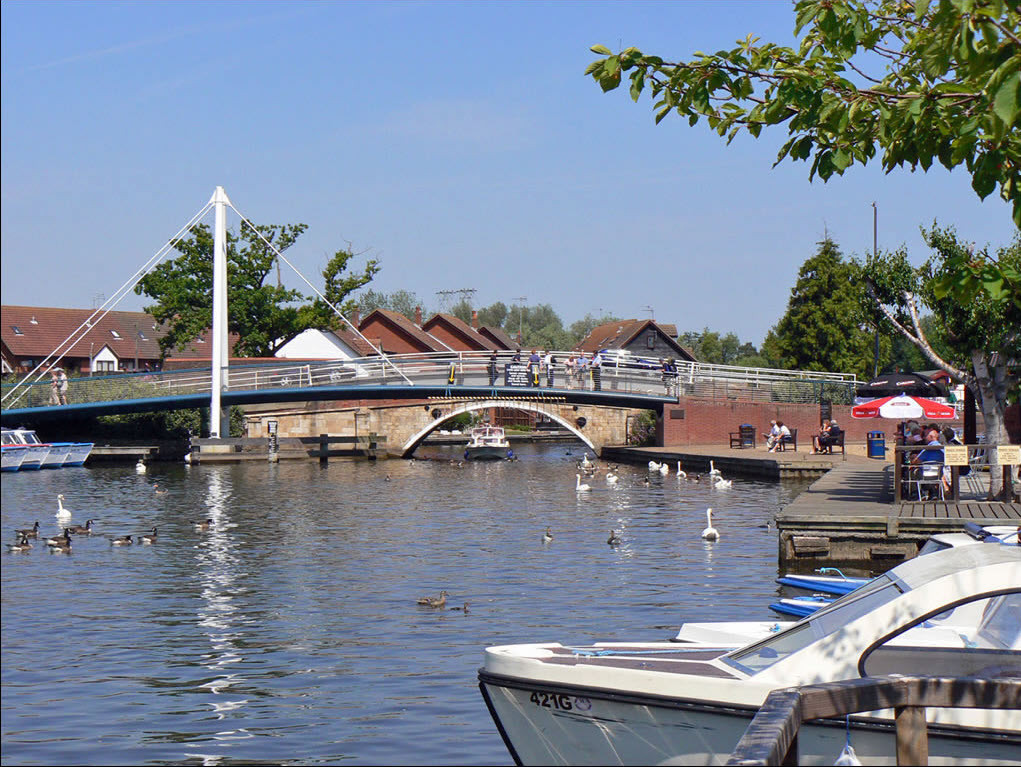The Broads National Park: Britain’s Largest Protected Wetland
The Broads National Park is a breathtaking landscape of fens, marshes, and woodlands, making it the largest protected wetland in Britain. Managed by the Broads Authority, this unique area balances conservation efforts with tourism and navigation, ensuring its rich biodiversity and cultural heritage are preserved for future generations.
A Watery Wonderland: Rivers, Broads, and Navigation
The Broads National Park is a vast network of 63 broads (shallow lakes) and 7 rivers, spanning Norfolk and Suffolk. While only 13 broads are navigable (the rest are too shallow), the interconnected rivers create over 126 miles of lock-free waterways, making it the third-largest inland navigation area in the UK.
The northern Broads begin near Stalham, home to the famous Barton Broad, one of the largest and most scenic in the region.
The southern Broads stretch down to Bungay, where the River Waveney meanders through picturesque countryside. The only remaining lock in the Broads is Mutford Lock, which separates Oulton Broad from the tidal waters of Lake Lothing.

A Surprising Man-Made Landscape
For centuries, the Broads were believed to be natural formations—until groundbreaking research in the 1950s by Dr. Joyce Lambert revealed their true origin. The Broads were actually dug out by medieval peat cutters between the 12th and 14th centuries. When sea levels rose, the pits flooded, creating the iconic waterways we see today.
Richardson’s Boating Holidays, one of the oldest hire companies, has been operating here for over 75 years, long before the Broads’ artificial origins were known.
Lord Nelson’s Early Sailing Grounds
Norfolk is famously the birthplace of Admiral Horatio Nelson, Britain’s greatest naval hero. Lesser known is that he learned to sail on the Broads as a boy. The region’s waterways provided the perfect training ground for the future victor of Trafalgar.
The county proudly bears the motto “Nelson’s County,” celebrating its connection to the legendary admiral.
Norwich: The Only City in a UK National Park
Unlike any other UK national park, the Broads includes a historic city—Norwich, known for its Norman Castle & Cathedral (home to England’s second-tallest spire), Elm Hill, a beautifully preserved medieval street, and The Mustard Shop, celebrating Norwich’s famous Colman’s Mustard.
A Haven for Rare Wildlife
The Broads are a biodiversity hotspot, sheltering 25% of the UK’s rarest species, including the Swallowtail Butterfly—Britain’s rarest butterfly, found only in the Broads. Its striking yellow, black, and blue wings mimic swallowtails. Other notable species include bitterns, a secretive heron species that thrives in the reedbeds, and otter populations, which have made a remarkable comeback in recent years.
Cultural Inspirations: From Bowie to Swallows & Amazons
The Broads’ ethereal beauty has inspired artists and writers for generations. David Bowie reportedly drew inspiration from the Broads’ otherworldly landscapes for his song “Life on Mars?” Arthur Ransome’s classic Swallows and Amazons series was partly inspired by his sailing adventures here in the 1930s.
The “Cathedral of the Broads” & Wroxham’s Bustling Charm
St. Helen’s Church in Ranworth, known as the “Cathedral of the Broads,” boasts one of the finest surviving medieval rood screens in England. Climb its tower for panoramic views. Wroxham, fondly known as the “Capital of the Broads,” is a lively hub featuring Roys of Wroxham—the world’s largest village store—and boat hire centres, perfect for exploring the waterways.
Final Thought: A Unique National Park Like No Other
From its medieval origins to its rare wildlife and cultural legacy, the Broads National Park is a treasure trove of history and nature. Whether you’re boating along its serene waterways, spotting rare butterflies, or exploring historic Norwich, the Broads offer an unforgettable adventure.
Norfolk isn’t just a place – it’s a living, breathing storybook of natural and human history, waiting for you to turn its pages.
